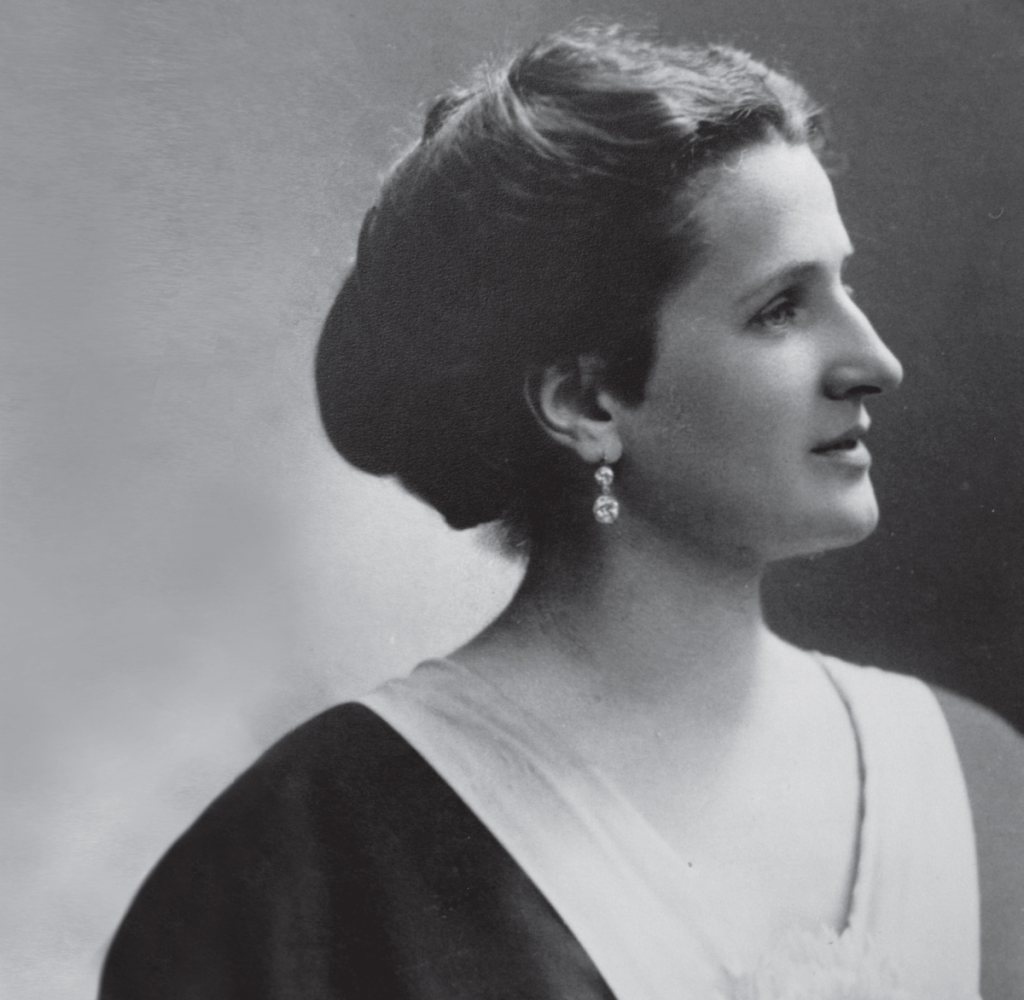Countess Jadwiga Straszewska (1826–1903) – businesswoman from Lipinki village

“The mine administration was very consistent: the refinery was located almost on the territory of a mine, there was no pipeline from the mine to the refinery, and crude oil was transported in large barrels drawn by horses. In this way, manor horses and carters had an occupation, and the manor had a profit.” (from the memories of Stef Bartoszewicz, technical manager of the refinery in Lipinki)
The heiress of Lipinki discovers active oil on her estate
Countess Jadwiga Straszewska was born in 1826 and died in 1903. She spent her entire life in Lipinki in Gorlice Land, and here, in the family chapel, she was interned. Jadwiga inherited Lipinki from her parents, Karolina and Teofil Łętowski. She lived there with her husband Franciszek Straszewski, and as the heiress to the land estate, she would have probably led a quiet life, typical for a land owner – if it had not been for an accidental discovery. A well for watering cattle, which had been dug out at her request, yielded water so foul that animals would not drink it. The reason was soon established by the administrator of Straszewska’s estates, Wacław Pieniążek – it was rock oil seeping into the water.
Wacław and his brother Ivo had long been interested in the subject of petroleum extraction, so the discovery prompted them to start exploration in the surrounding fields. The year was 1850. Although Jan Zeh and Ignacy Łukasiewicz would design the first kerosene lamp, only a few years later, the interest in rock oil was already widespread. In the nearby Siary, the first active oil mine of Prince Stanisław Jabłonowski would be built in two years’ time.
The first refinery in Gorlice Land – export grade paraffin “made in Lipinki”
From that moment on, the oil business developed very quickly: four years after digging out the well – noxious for cattle, and laying golden eggs for its owner – the first, 22-meter-deep dug-out shaft was operational in Lipinki. The first oil wells dug out on the countess’s estate lands were very dangerous. They were lined with timber and the spots where water seeped were patched with lard and rammed earth. Peasants from neighbouring villages worked at the oil wells. They drilled only by hand and never worked on more than one shaft at a time. For at least 20 years, Lipinki shafts were dug using shovels and pickaxes, and rock oil was extracted to the surface using buckets. With time, mining operations underwent mechanisation. Among others, a pumpjack powered by a steam engine was introduced.
1859 saw the launch of the first refinery in Gorlice land. Its director was Ivo Pieniążek, Dr. Stefan Bartoszewicz was the technical director, Wiktor Konopnicki was the book-keeper, and the clerical duties were performed by Józef Wilusz. Among others, the refinery produced paraffin exported to England, Belgium, the Netherlands, Germany, Sweden and France. The venture was financed by the members of the newly established oil companies: Straszewska-Fibich (refinery) and Stawiarski-Straszewska (mine).
The effects of the war juggernaut
In 1913, the mine with the extraction of 380 cisterns and the refinery of crude oil in Lipinki were sold to the French company Grabownica. During the First World War, the refinery was destroyed (it has never been rebuilt since), and during the Second World war, the oil deposits in Lipinki were significantly depleted as a result of unregulated exploitation by the occupant – in the seventies of the twentieth century, they were practically exhausted. However, before that came to be, over 650 shafts which together provided over 500,000 tons of crude oil had been dug and drilled in Lipinki. The godmother of this success was an heiress to a land estate who, as a 24-year-old woman, decided to grasp the opportunity offered by the oil boom emerging on Polish soil.
Inspirations:
- Kusiak Krzysztof i Anna, Wydobycie ropy naftowej w Lipinkach (Petroleum Extraction in Lipinki), „Z pogranicza” [historical blog], 24 July 2014 [access: 11.09.2015].
- Popielarz Piotr, Hrabina Jadwiga Straszewska (Countess Jadwiga Staszewska) (1826–1903), elipinki.pl [independent internet service], 30 December 2012 [access: 11.09.2015].
- Pabis Tadeusz, Hr. Straszewska Jadwiga (1826–1903). Właścicielka kopalni i rafinerii nafty (Countess Straszewska Jadwiga (1826–1903). Owner of petroleum mine and refinery), Regionalna Fundacja Upowszechniania Historii Przemysłu Naftowego w Regionie Gorlicko-Bieckim, [na] [access: 11.09.2015].
- Pabis Tadeusz, Jadwiga Straszewska, Libusza 2004.
Source of photos: Muzeum Przemysłu Naftowego i Etnografii w Libuszy (The Museum of the Oil Industry and Ethnography in Libusza) (archive of Anna and Tadeusz Pabis)

